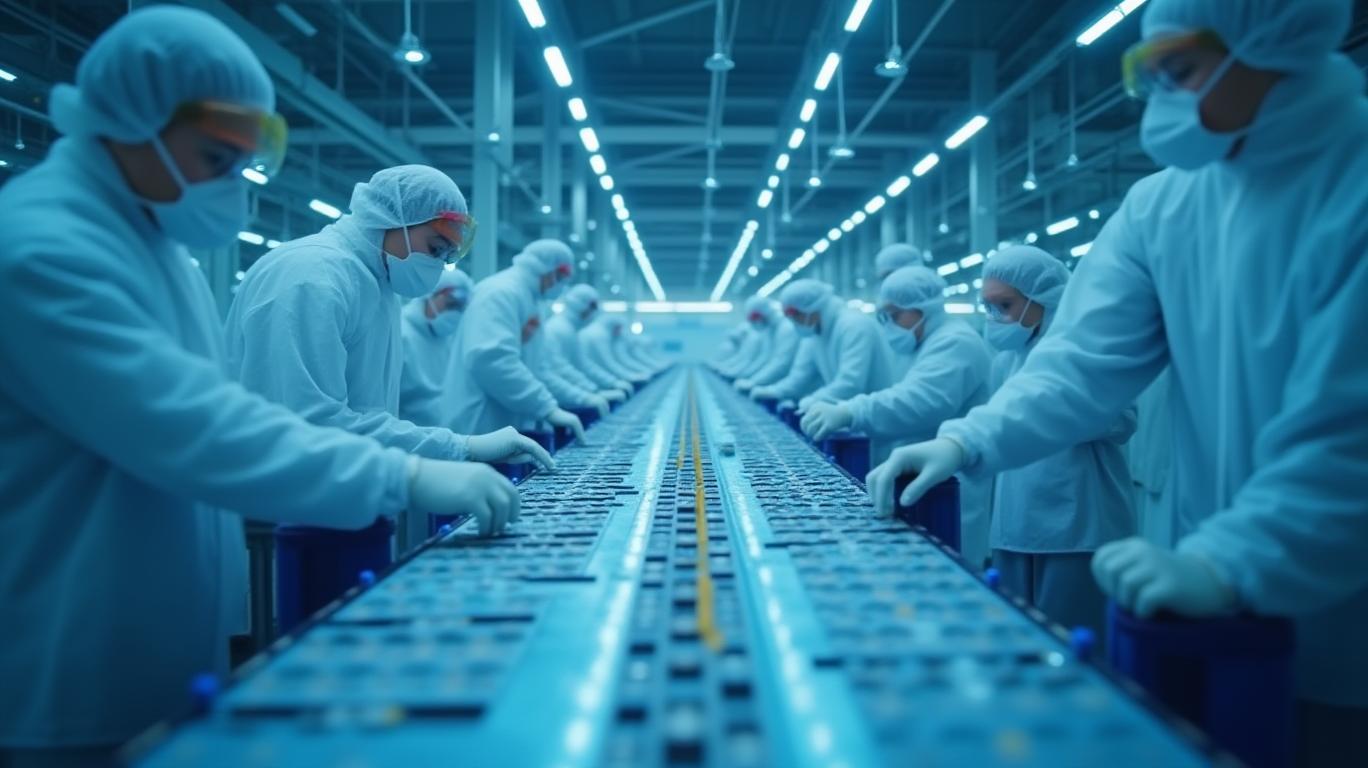Battery Wars: How Tariff Turmoil is Redrawing the Map of Lithium Power
The U.S.-China trade war over batteries has reached a fever pitch, with tariffs soaring to historic levels and supply chains in disarray. Yet within this chaos lies a golden opportunity: investors can capitalize on the scramble to decouple from Chinese lithium-ion dominance by backing firms building resilient domestic and regional production networks. The shift to lithium iron phosphate (LFP) batteries—safer, cheaper, and less reliant on scarce materials—is the key to unlocking profits in this fractured landscape. Here’s how to position your portfolio for the next phase of the battery boom.

The Tariff Trap: Why Chinese Dominance is Crumbling
China’s stranglehold on the battery market—producing 70% of global lithium-ion cells—has been shaken by U.S. tariffs now averaging 125% on key imports. While a 90-day tariff "truce" reduced rates to 10% in May, the baseline 30% levy (including fentanyl-related tariffs) remains, and Section 232 duties targeting steel and aluminum threaten to push costs even higher. This creates a golden window for competitors to seize market share.
The target? LFP batteries, which now dominate 80% of U.S. stationary storage systems due to their $100/kWh price tag—30% cheaper than nickel-based alternatives. Unlike cobalt-heavy NMC batteries, LFP requires no rare earth metals, making them immune to China’s export controls. For investors, this is the playbook: bet on companies that can scale LFP production while dodging tariff bullets.
Three Regions Leading the Charge: Where to Invest
1. The U.S.: Building Fortress Manufacturing
The Inflation Reduction Act (IRA) has unleashed $245 billion in subsidies to wean the U.S. off Chinese batteries. Key plays:
- General Motors (GM): Its $650M investment in Nevada’s Thacker Pass lithium mine ensures domestic supply for Ultium Cells’ 140 GWh U.S. gigafactories.
- BYD’s U.S. Partnerships: While the Chinese giant avoids direct investment, its Blade Battery tech is now powering Ford’s F-150 Lightning and Tesla’s Megapack.
- LG Energy Solution (LGES): Its Michigan plant, producing 50 GWh of IRA-qualified cells, is a cornerstone of Ford’s $11B BlueOval SK venture.
2. Southeast Asia: The New Battery Belt
Indonesia and Vietnam are emerging as global LFP hubs, thanks to abundant lithium, nickel, and tax incentives.
- EVE Energy (Malaysia): This CATL-backed firm is building a 30 GWh LFP plant to supply Europe and the U.S., riding Thailand’s EV battery tariff exemptions.
- LGES-Indonesia JV: A $2.8B factory in West Java targets 30 GWh by 2027, leveraging Indonesia’s 21% global nickel reserves.
- Recycling Powerhouse: China’s 6 million-ton battery scrap mountain by 2030 creates opportunities for firms like REPT Indonesia, which recycles black mass at 98% efficiency.
3. South Korea: The LFP Pivot
Once dominated by NMC batteries, Korean firms are racing to LFP to capture U.S. market share.
- SK On: Its 500 GWh global expansion plan includes U.S. plants using 100% domestic cathodes.
- Samsung SDI: Partnerships with Stellantis and BMW position it to supply 70% of European LFP demand by 2027.
Policy Tailwinds: How Trump’s Trade War Fuels Profits
The Biden administration’s tweaks to Trump-era tariffs have created asymmetric advantages:
1. IRA Tax Credits: U.S. companies get $35/kWh for domestic cell production—equivalent to a 20% margin boost.
2. Section 232 Safeguards: Steel and aluminum tariffs shield U.S. battery enclosures from Chinese competition.
3. Reciprocal Tariff Traps: While China’s retaliatory 84% tariffs bite U.S. LNG exporters, LFP manufacturers enjoy a “free pass” due to their material simplicity.
Valuation Metrics: Where the Winners Are Hiding
The sweet spot is firms with:
- Low Chinese Dependency: Korean and Southeast Asian producers sourcing <30% of inputs from China.
- LFP Expertise: Companies like BYD and LGES with >5 years of LFP R&D.
- Scrap Recycling: Firms like REPT that turn China’s lithium waste into profit.
Key numbers to watch:
- LFP cost per kWh: Target $80 by 2027 vs. current $100.
- U.S. tariff-avoiding capacity: 120 GWh online by 2026 vs. 40 GWh today.
- Scrap lithium recovery rates: 98% for leaders vs. 85% for laggards.
Risks and the Case for Immediate Action
The window is narrow. If the U.S. reimposes 245% “fentanyl tariffs” on Chinese batteries this fall, prices could spike 30%, creating a buyers’ frenzy for tariff-free alternatives. However, delays in IRA funding and supply chain bottlenecks remain risks.
Conclusion: The Battery Supply Chain is the New Oil Play
This is the moment to act. Allocate 5-7% of your portfolio to LFP leaders like SK On, EVE Energy, and GM’s battery division. Pair these with ETFs like the Global X Lithium & Battery Tech ETF (LIT) for diversification. The U.S.-China battery war isn’t just about tariffs—it’s about who controls the next decade’s energy infrastructure. The winners will be those who bet early on the firms building walls around their supply chains. Don’t wait for the next tariff shock—position now.
The race to 2030’s $1 trillion battery market is on. Will you be holding the winning cells?

Comments
No comments yet